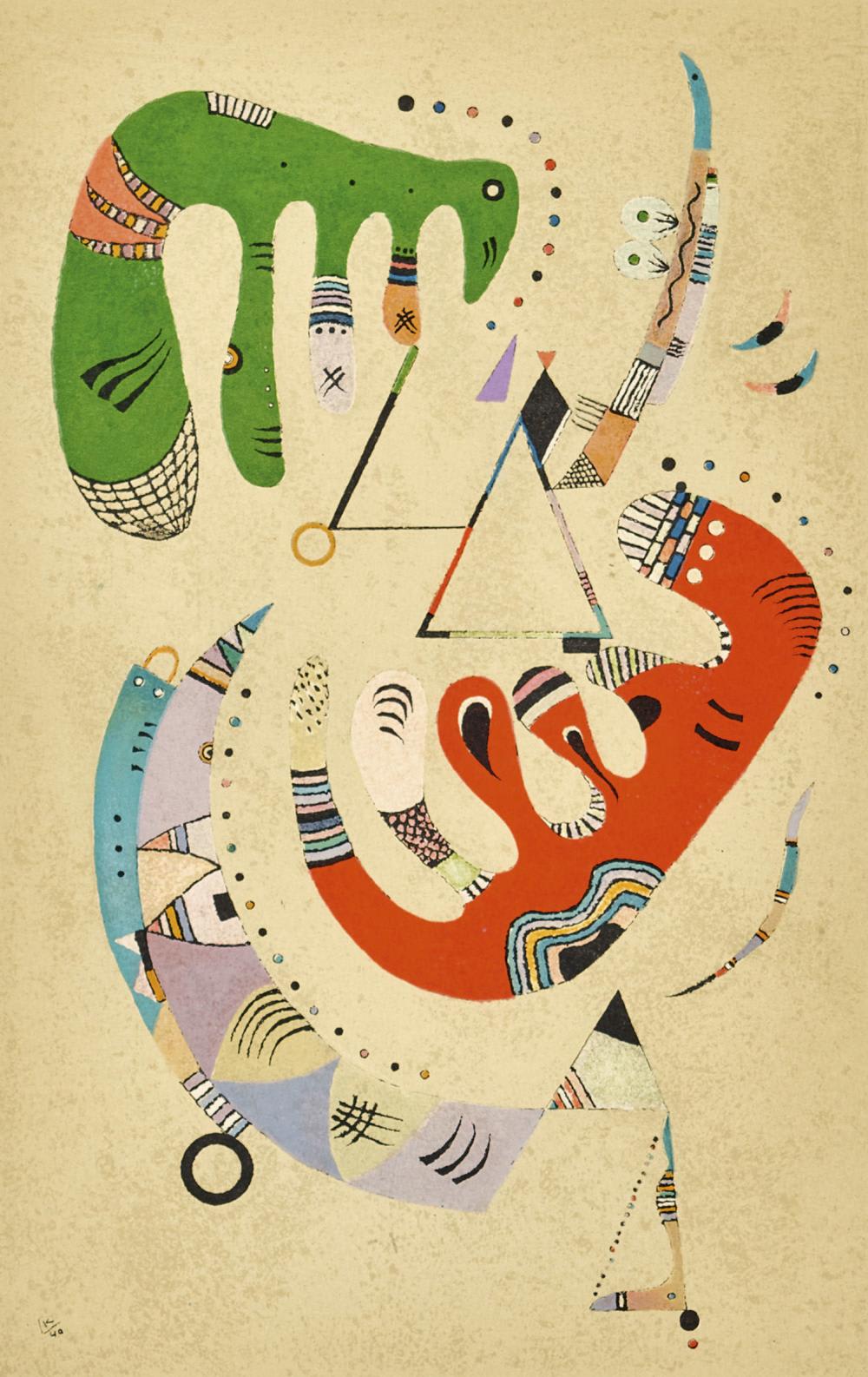Wassily Kandinsky
Période parisienne, 1969
Colour lithograph on paper, unframed
33.5 x 21 cm
© The Estate of Wassily Kandinsky
The exquisite arrangement of the composition's forms and colors represent Kandinsky’s final phase of development at a time when the Surrealists dominated the cultural topography and the city of Paris...
The exquisite arrangement of the composition's forms and colors represent Kandinsky’s final phase of development at a time when the Surrealists dominated the cultural topography and the city of Paris was a hotbed of creative rivalry. Kandinsky had a long association with Paris, which he had first visited in 1889 when he began to exhibit at various galleries. He spent his formative years in 1906-1907 on the outskirts in Sèvres with Gabrielle Münter. Throughout the next two decades, Kandinsky kept in contact with the Parisian milieu, and through the mediations of Henri Le Fauconnier, he became acquainted with Matisse, Delaunay and Picasso.
During this final period his painting, which he began to prefer to call “concrete” rather than “abstract,” became to some extent a synthesis of the organic manner of the Munich period and the geometric manner of the Bauhaus period. The visual language that he had been aiming at since at least 1910 turned into collections of signs that look like almost-decipherable messages written in pictographs and hieroglyphs; many of the signs resemble aquatic larvae, and now and then there is a figurative hand or a lunar human face. Typical works are Violet Dominant, Dominant Curve, Fifteen, Moderation, and Tempered Élan. The production of such works was accompanied by the writing of essays in which the artist stressed the alleged failure of modern scientific positivism and the need to perceive what he termed “the symbolic character of physical substances.”
Discussing the artist’s last years, his wife, Nina, wrote: “Certainly in his Parisian period Kandinsky is wholly present. We discover there a Kandinsky who remembers everything that during the course of his work he appears to have forgotten only in order to concentrate the essence and to give us, in this dazzling final firework, the ultimate and thrilling images” (N. Kandinsky, Kandinsky, Parisian Period 1934-1944 (exhibition catalogue), M. Knoedler & Co., New York, 1969, p. 25).
During this final period his painting, which he began to prefer to call “concrete” rather than “abstract,” became to some extent a synthesis of the organic manner of the Munich period and the geometric manner of the Bauhaus period. The visual language that he had been aiming at since at least 1910 turned into collections of signs that look like almost-decipherable messages written in pictographs and hieroglyphs; many of the signs resemble aquatic larvae, and now and then there is a figurative hand or a lunar human face. Typical works are Violet Dominant, Dominant Curve, Fifteen, Moderation, and Tempered Élan. The production of such works was accompanied by the writing of essays in which the artist stressed the alleged failure of modern scientific positivism and the need to perceive what he termed “the symbolic character of physical substances.”
Discussing the artist’s last years, his wife, Nina, wrote: “Certainly in his Parisian period Kandinsky is wholly present. We discover there a Kandinsky who remembers everything that during the course of his work he appears to have forgotten only in order to concentrate the essence and to give us, in this dazzling final firework, the ultimate and thrilling images” (N. Kandinsky, Kandinsky, Parisian Period 1934-1944 (exhibition catalogue), M. Knoedler & Co., New York, 1969, p. 25).
Join our mailing list
* denotes required fields
We will process the personal data you have supplied to communicate with you in accordance with our Privacy Policy. You can unsubscribe or change your preferences at any time by clicking the link in our emails.
